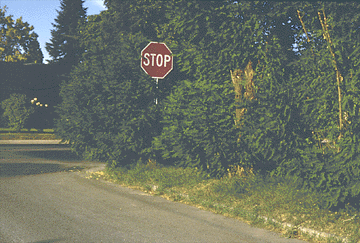Urban Forestry Ordinance
Coeur d’Alene’s public trees provide a variety of benefits to both people and the environment. The care and maintenance of Coeur d’Alene’s street trees are a cooperative effort between the City of Coeur d’Alene and the owners of private property that abuts the right-of-way.
Caring for our City’s Trees
Coeur d’Alene’s Urban Forestry Ordinance gives guidelines for the care and maintenance of all public trees and shrubs. The standards of tree care that the City Council has adopted are the American National Standards (for pruning, fertilizing, supplemental support systems) and Community Canopy tree planting details.
"Public trees" include trees growing within the public rights-of-way as well as trees growing in parks and on other city property. The right-of-way is the strip of land set aside for public uses such as streets, alley, sidewalks and utilities. Right-of-way widths vary from street to street. To determine whether or not a tree is growing within the right-of-way, contact the city’s Urban Forestry Coordinator (phone 769-2266).
The owners of the private real property that abuts the rights-of-way (also called the "Controllers"), share with the city a responsibility for the stewardship of the city’s street trees. By maintaining those trees within the right-of-way adjacent to their property, the Controllers contribute to the beauty of the city’s streets.
Controller Responsibilities
Controllers have the responsibility to:
- Care for and maintain public trees and shrubs adjacent to their property;
- Meet requirements and obtain all permits;
- Trim or prune trees for clearance over sidewalks (7') and streets (14');
- Spray to control insects and diseases;
- Remove trees and shrubs, public or private, declared a public nuisance;
- Replace trees or shrubs that have been removed by the Controller;
- Repair damage to street, sidewalk or curb caused by public or private trees or shrubs;
- Remove and replace public trees which have been topped or improperly pruned.
Public Nuisances
Trees that pose a nuisance to the public must be removed and replaced. Nuisance trees include trees that are dead, defaced, broken, dangerous, diseased, or that have an infestation of pests, insects, or eggs or larvae which may spread. Parts of trees can also be a public nuisance, such as the roots of any tree or shrub which interfere with or cause the surface of the street, curb or sidewalk to be heaved or disturbed. Trees and shrubs must also be maintained so that they do not impair visibility of traffic signs, street signs, or vision between 3 feet and 8 feet within 30 feet of an intersection.
Sidewalk and Street Damage
Controllers are responsible for repairing the damage done to street, sidewalk, or curb by the roots of public or private trees.
Prevention is the best way to deal with sidewalk problems. Selection of the right size and species of tree will prevent many problems. When planting trees, a 12" deep root barrier can be installed to guide tree roots below the sidewalk.
Permits are required for root pruning. Many sidewalk deviations can be made to prevent root loss - check with staff in parks or engineering for more information.
Doing the Job Yourself
You will be given helpful "how to" information along with your permit. If your tree activities will be impairing the use of the sidewalk or road, an encroachment permit from the City’s Engineering Division is also required. All debris must be removed from the streets by sunset of the day you do the work.
If you are going to remove a tree on your own, you will need to sign a hold-harmless agreement for liability purposes.
Public tree removal without a permit is a violation of the city ordinance and can result in a misdemeanor penalty in addition to a fine in the amount of the appraised tree value.
Hiring a Licensed Operator
If you are hiring someone to plant, prune or remove trees within the right-of-way, you must use a city-licensed tree service. This assures you that the service is aware of city standards and also fulfills city insurance requirements. For a list of tree services currently licensed with the City, see this web page under the section on "Planting and Parenting".
Unlawful Acts
It is unlawful for for any person to willfully damage, mutilate or destroy any public tree or shrub. Please do not:
- Burn leaves or other materials near the trunks of trees;
- Store oil, gasoline, chemicals or other harmful materials around public trees and shrubs;
- Attach wire, signs or power sources to trees;
- Dump paint thinner, paint, plaster or other toxic wastes on the ground anywhere under a tree;
- Expose portions of trees to frequent contact with construction equipment;
- Make cuts in the ground near roots of trees;
- Damage roots by compacting or filling on or near the base of a tree or shrub.








